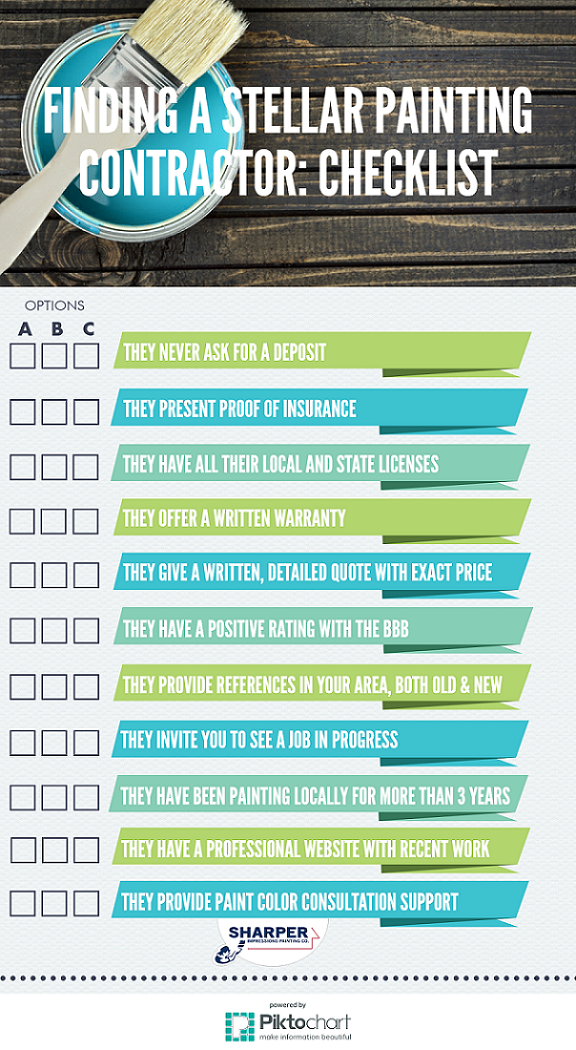Discover The Influence Of Weather On Your External Paint Job For A Flawless Surface
Discover The Influence Of Weather On Your External Paint Job For A Flawless Surface
Blog Article
Post Developed By-Mosegaard Handberg
Comprehending how weather conditions can affect the outcome of an external paint endeavor is paramount for accomplishing a perfect finish. From temperature level changes altering paint adhesion to moisture degrees impacting drying out times, each element of weather plays a considerable role in the success of your job. Additionally, wind speed and precipitation can introduce unanticipated challenges that may endanger the quality of the result. As we browse through the nuances of weather condition's impact on external painting, it ends up being apparent that careful planning and calculated timing are vital for ensuring a professional and durable result.
Ideal Temperature Level Variety for Paint
When considering external painting jobs, the optimal temperature range plays a critical function in achieving optimum outcomes. Paint in the best temperature level problems makes certain that the paint sticks appropriately to the surface area, dries out equally, and cures properly. Normally, the suggested temperature level range for exterior paint is between 50 to 85 degrees Fahrenheit.
Paint in temperatures below 50 degrees Fahrenheit can bring about problems such as bad paint attachment, extended drying times, and a boosted probability of fracturing or peeling.
On the other hand, painting in temperature levels over 85 levels Fahrenheit can trigger the paint to dry as well promptly, causing blistering, gurgling, and an uneven finish.
To attain the most effective results, it is essential to inspect the weather forecast prior to starting an external painting task. Ideally, purpose to paint throughout mild weather conditions with moderate temperature levels and low moisture degrees.
Effects of Moisture on Paint Drying
Moisture degrees significantly impact the drying procedure of paint applied to exterior surface areas. High humidity can lengthen the drying time of paint, resulting in possible problems such as dripping, streaking, or perhaps the formation of bubbles on the repainted surface area. Excess moisture in the air reduces the evaporation of water from the paint, hindering the treating procedure. This is particularly problematic for water-based paints, as they depend on dissipation for drying.
On the other hand, reduced moisture degrees can also influence paint drying. Extremely completely dry conditions may cause the paint to completely dry also rapidly, leading to bad attachment and a harsh surface. In such instances, including a paint conditioner or spraying a fine haze of water in the air can assist control humidity levels and improve the paint outcome.
To make certain optimal drying out problems, it is recommended to repaint when the humidity levels vary in between 40% and 50%.
Tracking humidity levels and taking proper measures can aid attain a smooth and durable paint surface on outside surfaces.
Wind and Rainfall Factors To Consider
Wind speed and rainfall are crucial variables that dramatically affect the success of an outside paint task.
When it involves wind, both rate and instructions are important factors to consider. https://residentialpaintersnearme12009.blogdemls.com/33787239/immerse-on-your-own-in-a-landscape-of-dynamic-opportunities-as-we-disclose-just-how-expert-residence-painters-can-aid-you-change-your-home can create paint to dry too swiftly, leading to a substandard finish with possible problems like breaking or irregular appearance. Furthermore, painting a building can carry debris that might stick to the wet paint, bring about blemishes. Therefore, painters ought to intend to work on days with light to moderate winds for optimum paint problems.
On the other hand, precipitation, whether rainfall or snow, can be extremely destructive to the result of an external painting job. Moisture from rainfall can impede paint bond, triggering peeling off and bubbling over time. It is critical to avoid painting throughout wet or snowy climate to ensure the long life and top quality of the paint task. Painters should additionally enable ample time for the surface to completely dry extensively after any type of rainfall before beginning or resuming the paint procedure.
Conclusion
Finally, weather conditions play a considerable duty in the result of an outside paint job. The suitable temperature level variety, humidity levels, wind rate, and rainfall all contribute to the success or failing of the paint job.
It is essential to consider these aspects and plan as necessary to make sure correct paint attachment, drying times, and total quality of the completed product.
